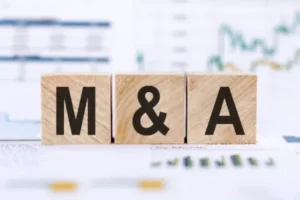Virtual Data Room use has been successful in reducing deal leaks, two words that can indicate disaster for high-value transactions. The capacity to track every user’s activity within the data room, deny access to users remotely, and retrieve this information at a later date have all led to more secure transactions. In this blog, we will discuss about how does data room help avoid M&A Leaks?
Whether you’re protecting data from negligent staff, hostile competitors, or hackers, some actions are increasingly being taken in the business to prevent leaks, and we’ll walk you through them below.
What Causes Deals to Leak?
Leaks on Purpose
A (planned) transaction leak can be approached from two perspectives: the seller side and the buyer side:
- Sell-side leaks – By leaking transactions, sellers hope to raise the price by attracting more interested parties who might want to bid. Rival bidders may then pressure the initial bidder to raise their offer.
- Buy-side leaks are more of a way out of a possible bid. The buyer may encounter concerns throughout the due diligence phase and elect to exit the deal without encountering any legal or regulatory obstacles. Some people do this by leaking the contract, which causes a delay in the completion time. This forces the sellers to seek alternate bidders, and the buyer now has an easy way out without having to pay the price of breaching a transaction agreement because it is the seller, not the buyer, who had broken the deal.
Deals are sometimes intentionally leaked to speed up the process. When a buyer notices delays on the sell side, he may leak a deal to put pressure on the seller, and a seller may leak a transaction to force the buyer’s interest level down.
Then there’s the deliberate leak for personal advantage through insider trading and other means.
Inadvertent Leaks
“The weakest link in the security chain is humans”… Do you recognize this phrase? If it does, you understand exactly what we’re trying to say. People are frequently unaware of the implications of poor information handling. People occasionally let crucial information slip through the cracks when socializing. These days, deal teams have a lot of people working on different aspects of the due diligence process. The potential of inadvertent leaks is substantially larger when there are so many people involved in the transaction.
Another equally crucial factor to consider is social engineering. It’s a fiercely competitive world out there, and you could be tricked into leaking just enough information by your competition.
How may these Leaks be Avoided?
These leaks can substantially sabotage a deal, whether they are intentional or not. Leaks can be reduced to a certain extent by imposing strict laws and regulations on fraud and insider trading during M&A agreements. However, each country has its own set of rules, and in the case of cross-border transactions, businesses must devise a comprehensive plan to prevent and prepare for leaks.
Inform Employees:
First and foremost, you must ensure that your staff is aware of what is expected of them. A comprehensive confidentiality agreement should be signed by everyone involved in the transaction. They should also be briefed on the information’s sensitivity and what constitutes a breach of confidentiality. Even when stringent laws and processes are in place, trust and ignorance are the two most typical human behaviors that contribute to the gap. Every employee should receive proper social engineering training.
New routes for unintended disclosures keep popping up in the age of big data. Consider a case where a possible buyer was looking at a profile of an employee from a target firm without realizing that the employee could see that a competitor had examined his information on social media. When this happens to more than a few individuals at a target firm, rumors begin to circulate. These early clues jeopardize not only the deal but the entire organization.
Using Virtual Data Room Technology to Control Access:
A leak is more likely when there are too many people working on the process. It’s best if your deal team is small. Limiting is one method, but it is not the only one. If you have numerous partners in a deal, make them aware that they are all responsible. To accomplish this, businesses are turning to technological advancements like Virtual Data Rooms.
Individuals comprehend the accountability of their activities when they have the opportunity to completely monitor and trace behavior. Even when the agreement is finished or a person is removed from the project, the documents they downloaded for DD can be controlled and locked down remotely.
Pay Attention to Details:
Disposing of confidential documents is another crucial aspect of the process that is frequently overlooked. To reduce risk and ensure that data is handled properly according to the protocol specified for saving and deleting documents received or created during the transaction, every firm should have a consistent and competent document retention policy.
Deal leaks are on the decline, according to a study done by London’s Cass Business School. According to the survey, strong regulatory policies and effective methods for preserving confidentiality are among the primary reasons for the decrease in deal leaks.
VDRs are a permanent presence in today’s M&A operations, although every deal is unique and the same strategy cannot always be followed. There are huge potential benefits, but how this technology is used makes all the difference.
In the end, any VDR won’t be able to revolutionize your practice, but one created particularly for M&A might.





